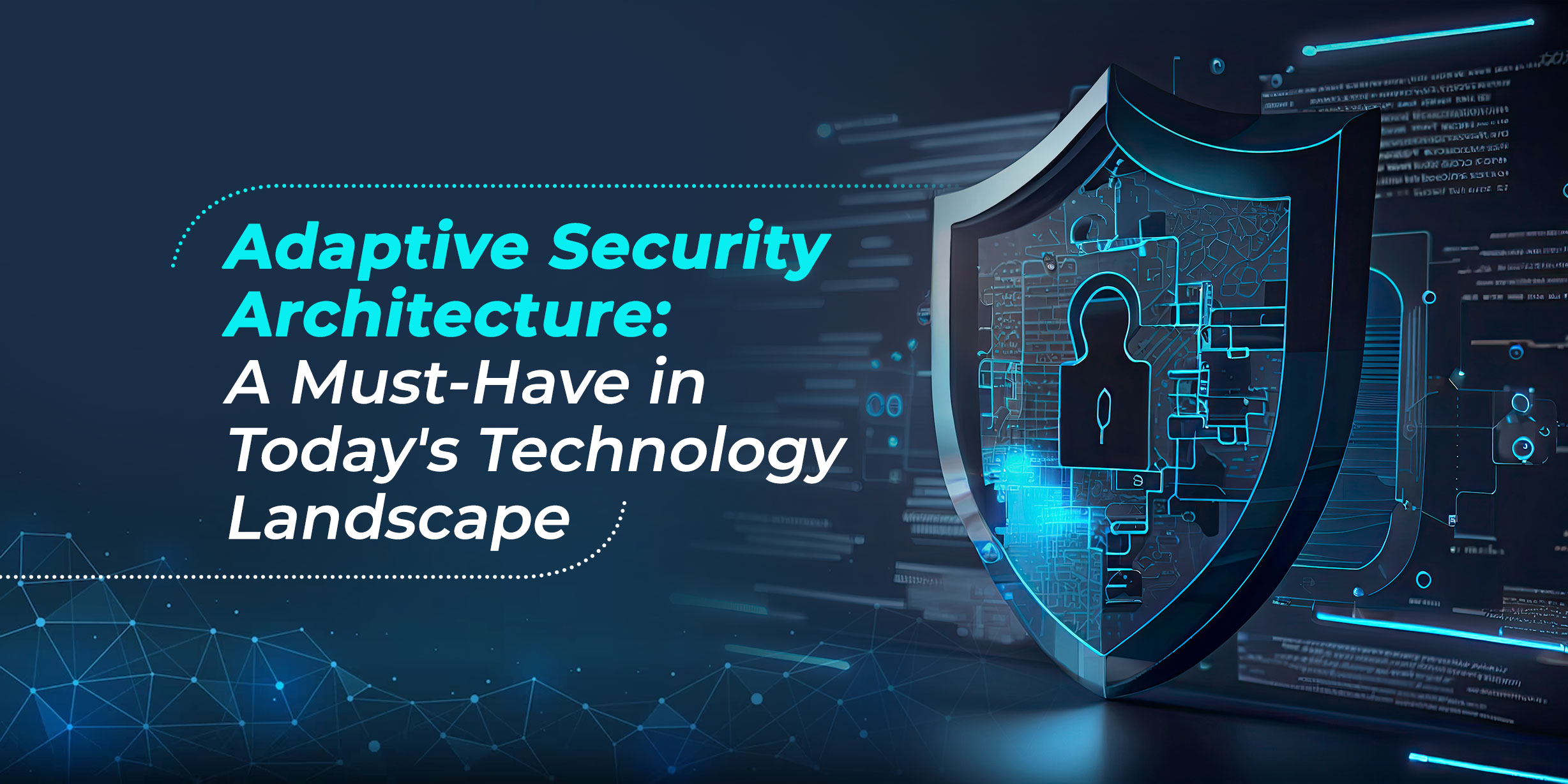Today, security architecture in mortgage is more important than ever before. Over the last few quarters, lenders have been bombarded with cyber-attacks, resulting in severe consequences. HomeTrust Mortgage reported a data breach due to ransomware in November of last year. In 2023, Carrington Mortgage Services suffered a ransomware data breach that exposed customer data, including social security numbers.
That’s why at the recent Mortgage Bankers Association (MBA) Technology Solutions Conference Expo, the importance of security architecture emerged as a critical topic, and government-sponsored enterprises (GSEs), such as Freddie Mac, are making security measures mandatory. With the security landscape evolving so fast, mortgage companies need systems that can adapt – which is why adaptive security architecture is a must-have.
Read more: 5 Mortgage Cybersecurity Trends of 2023
What Is Adaptive Security Architecture in Mortgage?
Rather than being a technology or a solution, adaptive security architecture is a framework to help you make smarter security choices and investments. It refers to a cybersecurity approach that prioritizes real-time monitoring, continuous response, immediate remediation, and learning to prevent future attacks, instead of only reacting.
With mortgage technology rapidly advancing, security needs will also change. Today, vast amounts of customer data are housed in the cloud. Much of the decision-making is handled by machines without any human intervention. Data may traverse several platforms and environments while processing, thanks to greater interoperability. All of this adds to your threat vectors.
In response, GSEs like Freddie Mac are doubling down on security architecture and lenders’ threat detection capabilities. In October 2022, it updated its risk mitigation requirements, making it mandatory to notify and directly report on certain types of security incidents. Adaptive security architecture makes it possible to detect incidents in real time and contain them as soon as possible.
Read more: The Impact of Digital Immune System on Mortgage Operations
What Does Adaptive Security Architecture Comprise?
This type of security architecture comprises people, processes, and technologies that can perform the following:
1. Detecting attacks
The first step is to continuously monitor your systems for threat detection in real time. At the same time, the framework ensures that the security posture itself undergoes monitoring, to know which flaw or shortcoming was responsible for the exploit. Using this data, the incident is prioritized and contained, based on the severity of the risk it poses.
2. Responding to changes in the nature of threats
Over time, threats evolve and it is likely that lenders will face a barrage of different attacks as they use new technologies. The next step in adaptive security architecture requires you to initiate remediations by changing your security model and/or policies. The mortgage company must undergo detailed analysis to find long-term gaps in the security posture, so that your security posture can undergo adjustments.
3. Predicting future attacks
By leveraging the data collected so far, the organization now builds the capability to predict and prevent attacks. Are there any unavoidable vulnerabilities — such as the ones arising from underlying code? Do certain policies lead to increased risk levels? During the prediction phase, you form the baseline for measuring security and score your risk levels, in order to implement the adjustments to your security posture.
4. Preventing malicious activity
By now, you know exactly where your weaknesses lie, the incidents that are most common, and which attacks could lie ahead. Now, it is time to prevent malicious activity by hardening and isolating systems and continuously monitoring your security posture. Therefore, the adaptive security architecture comes full cycle and you are once again ready for threat detection – only now, with a stronger security capability.
The aim of adaptive security architecture is to continually and incrementally improve a lender’s ability to protect its information technology and data storage systems through this four-step cyclical framework.
Read more: What’s the Buzz Around AI TRiSM?
How to get Started with Adaptive Security Architecture
Two functions are at the core of adaptive security architecture: real-time threat detection and agile reconfiguration of cybersecurity policies, processes, and systems. Therefore, mortgage companies are advised to:
- Invest in unified dashboards: These will display security indices across your organization as well as outsourcing partners and enable correlations between risks and their causes. Dashboards will also generate reports that can be used for data modeling and process optimization.
- Build data literacy in your IT and business teams: For adaptive security architecture to succeed, the stakeholders must recognize the importance of different metrics, architectural models, and process flowcharts. Data literacy makes continuous monitoring more effective.
- Set up a center of excellence: For large mortgage companies, installing a new security architecture can be complex and may call for a governance shift. A CoE will ensure there is ownership and accountability across the four-stage life cycle, as well as a common set of standards that you and your partners can adhere to.
- Design digital infrastructure for adaptability: Adaptive security architecture is the antithesis of the set-and-forget approach to threat detection. This means that your security posture must be agile. You should be able to easily add and remove components, change access controls, train new users, and algorithmically learn about new threats.
As technology continues to play a central role in mortgage operations, the threat of data breaches or business interruptions is very real. Adaptive security architecture ensures that mortgage companies are prepared for an evolving cybercrime landscape, and it all begins with a robust digital infrastructure that does not compromise when it comes to security. At Nexval, our team of 1000+ industry experts delivers future-ready mortgage solutions to protect lenders and servicers.
Speak with our Tech Gurus to learn more.


